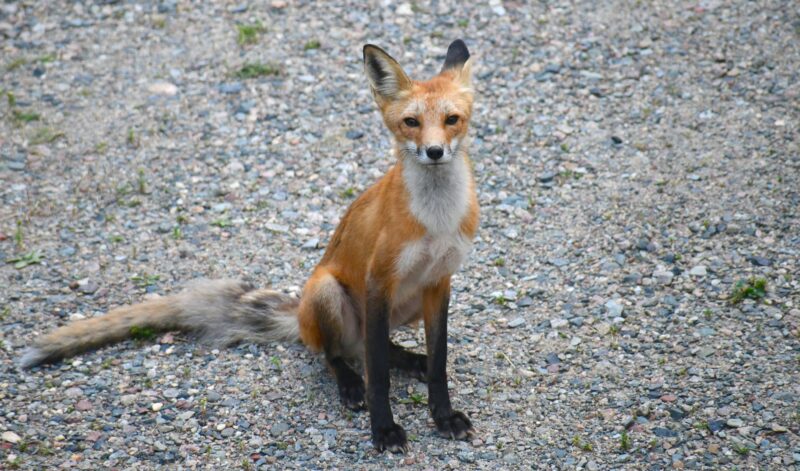
As the leaves change color and temperatures drop, Minnesota’s landscapes transform into a vibrant display of autumn beauty. Along with the seasonal changes come shifts in the behavior and visibility of the state’s diverse wildlife. Fall is an excellent time to observe these creatures as they prepare for the colder months ahead. However, it’s also a critical time to practice stewardship, ensuring that our actions help preserve the delicate balance of these natural ecosystems.
What Fall Wildlife to Look For in Minnesota
Minnesota’s diverse habitats—from dense forests to expansive prairies and wetlands—support a wide variety of wildlife. In the fall, many of these animals become more visible as they prepare for winter.
- Migrating Birds
Fall is a prime time for birdwatching in Minnesota. As temperatures drop, many bird species migrate south, providing opportunities to spot them along their journey. Look for:
- Sandhill Cranes: These majestic birds often gather in large flocks in open fields and wetlands.
- Bald Eagles: Minnesota is home to a significant population of bald eagles, which can be seen soaring near rivers and lakes as they hunt for fish.
- Waterfowl: Ducks, geese, and swans can be observed in large numbers as they stop to rest and refuel on lakes and wetlands during their migration.
- White-Tailed Deer
Fall is mating season for white-tailed deer, making them more active and visible. Look for bucks with antlers in full velvet as they prepare for the rut. Early mornings and late evenings are the best times to spot deer in forested areas and along the edges of fields.
- Black Bears
In the fall, black bears are busy foraging for food to build up fat reserves for hibernation. They are often seen near berry patches, oak groves, and cornfields. While sightings are more common in northern Minnesota, bears can occasionally be seen in more southern areas as well.
- Red Foxes
Red foxes are more active during the fall as they prepare dens for the winter. They can be seen hunting small mammals in open fields and forest edges. Their beautiful, thickening coats make them a striking sight against the autumn foliage.
- Amphibians and Reptiles
As temperatures cool, amphibians and reptiles seek out warm spots to bask or begin hibernating. Turtles, frogs, and snakes are often seen near water sources, sunning themselves on rocks or logs.
How to Care for Fall Wildlife: Minnesota Stewardship in Action
While fall is a wonderful time to observe wildlife, it’s also a critical period for practicing stewardship. The actions we take now can have a significant impact on the health and survival of these species throughout the winter and beyond.
- Respect Wildlife Habitat
As wildlife prepare for winter, it’s important to minimize disturbances to their habitats. Stay on designated trails when hiking and avoid venturing into sensitive areas where animals might be nesting, feeding, or resting. This helps reduce stress on wildlife and preserves the natural environment.
- Practice Responsible Bird Feeding
Feeding birds during the fall can be a rewarding experience, but it’s essential to do so responsibly. Use bird feeders that are squirrel-proof and clean them regularly to prevent the spread of disease. Offer high-energy foods like black oil sunflower seeds, suet, and peanuts to help birds build fat reserves for migration.
- Avoid Using Harmful Chemicals
Chemicals such as pesticides and herbicides can be harmful to wildlife. In the fall, when many animals are foraging, it’s especially important to avoid using these substances in your yard and garden. Opt for natural alternatives or embrace a more organic approach to lawn and garden care.
- Support Local Stewardship Efforts
Minnesota stewardship is about more than individual actions—it’s also about coming together as a community to care for our natural places. Many local organizations and state parks offer volunteer opportunities for habitat restoration, invasive species removal, and wildlife monitoring. Participating in these activities helps care for the natural spaces that wildlife depend on.
Embrace Minnesota Stewardship This Fall
Fall in Minnesota is a season of change, beauty, and opportunity. As you explore the state’s parks, forests, and wetlands, take the time to appreciate the wildlife that makes these places so special. Remember that Minnesota stewardship is not just about observing nature—it’s about actively caring for our natural places and ensuring they thrive for generations to come.
By respecting wildlife habitats, practicing responsible behaviors, and getting involved in local stewardship efforts, you can make a meaningful difference in the health and sustainability of Minnesota’s natural environment. So, as you enjoy the crisp air and vibrant colors of fall, take a moment to consider how you can contribute to the care of the wildlife that call Minnesota home.